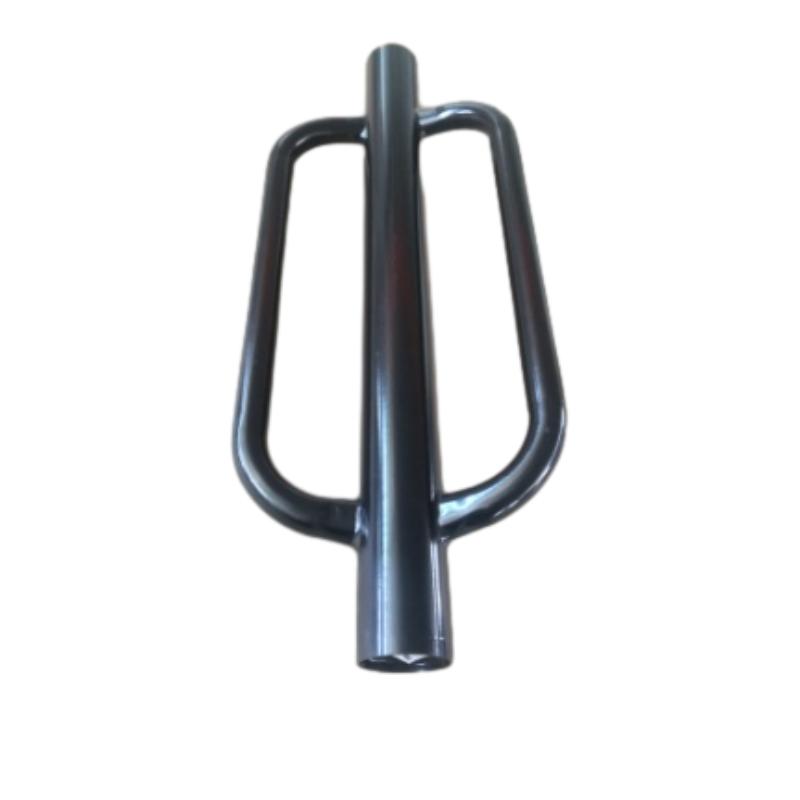-
Email:zhao@hyliec.cn
-
Tel:+86 311 85273988
-
WhatsAPP:8613931128750
Looking for tools for fence with durable, ergonomic design?
Practical Buyer’s Guide to Tools for Fence Installers: Field Notes, Specs, and Real-World Picks
I’ve spent enough dusty mornings on ranch lines and suburban backyards to say this plainly: good fence work lives or dies by its tools. If you’re shopping tools for fence, the bundle that actually gets jobs done is pretty consistent—twist drill for pilot holes, T-post ram, T-post puller, wire twisting tools, and stout pliers. Origin matters (these come from China), but process, steel choice, heat treatment, and coatings matter more. Many customers say the difference shows up on day two—when your hands aren’t wrecked and your hardware hasn’t bent.

What’s in the kit and why it matters
The core lineup—Twist drill for hole / T pos ram / T post puller / wire twisting tools / pliers—covers install, tension, and repair. The twist drill prevents wood splitting; the ram sets posts fast; the puller is your “undo” button; the wire twister saves forearms; and pliers, well, you use them every five minutes. It seems basic, but ergonomics and metallurgy separate a smooth day from a slow one.
Industry trends (quick take)
- Shift to heavy-duty steels (45# or 60Si2Mn) with better heat treatment for longevity.
- More zinc plating and powder coat to fight rust; sustainability talk is real, recycling content is creeping up.
- Compact ratcheting twisters and pullers for smaller crews; fewer blisters, faster resets.
Product specifications (field-proven)
| Item | Material / Finish | Key Specs | Service Life | Standards |
|---|---|---|---|---|
| Twist Drill | HSS (M2) / Black oxide | Ø6–14 mm; 135° split point; HRC ≈ 62 | ≈ 5,000 holes (softwood); real-world may vary | ISO 6508 hardness test |
| T-Post Ram | Carbon steel / Powder coat | Weight 8–16 lb; welded handles | 3–5 years heavy use | OSHA tool handling guidance |
| T-Post Puller | Alloy steel / Zinc-plated | Lift > 3,000 N; serrated jaws | > 10,000 pulls (≈) | ASTM A153 coating |
| Wire Twisting Tool | Spring steel / Galvanized | Works with 12–16 ga wire | > 50,000 twists | EN 60745 ergonomics (approx.) |
| Pliers | Cr-V steel / Anti-slip grip | HRC 55–60; cutting 2.5 mm wire | 2–4 years daily use | ISO 5749 |

Process flow and quality checkpoints
Materials: HSS for drills, Cr-V and alloy steels for leverage tools; zinc plating or powder coat for corrosion resistance. Methods: CNC grinding for split-point drills; induction heat treatment for jaws and cutting edges; MIG welds on rammers. Testing: Rockwell hardness (ISO 6508), coating thickness (ASTM A153), torque and pull tests on twisters/pullers, and drop tests on rams. Typical service life ranges 2–5 years depending on soil, moisture, and how you treat your kit—no surprise there.
Where these shine
- Farm and ranch perimeters, vineyard trellising, roadside barriers.
- Residential garden and pet fencing (lots of retrofits, to be honest).
- Utilities and temporary site fencing where speed beats finesse.
Advantages: faster set and pull cycles, fewer stripped wires, less user fatigue. Feedback has been surprisingly consistent—crews like the balance on the ram and the bite on the puller. On wet days, the powder-coat grip helps more than marketing admits. If you’re searching for tools for fence that hold up, this is the short list.
Vendor comparison (what to look for)
| Vendor | Certs | Lead Time | Customization | Notes |
|---|---|---|---|---|
| HYLIEC Fence (China) | ISO 9001; RoHS on coatings (on request) | 15–25 days | Logo, color, handle style, kit bundling | Good QA data sheets; fair MOQ |
| Generic Importer | Basic CE claims | 20–40 days | Limited | Specs vary by batch; ask for hardness data |
| Local Retail Brand | Retail QC only | In stock | None | Convenient but pricier; mixed durability |
Customization and compliance
Private labeling, custom powder-coat colors, handle ergonomics, and mixed kits are doable. Ask for hardness (HRC) and coating μm reports, plus pull/torque testing. For jobsite acceptance, align with ASTM A153 (zinc), OSHA 1926.302 for hand tools, and basic CE/EN ergonomics. If you’re bidding municipal work, spec these, and you’ll avoid procurement hiccups.

Mini case studies
Vineyard retrofit (Napa): Crew swapped to split-point drills and cut post cracking by ≈70%, finishing two days early. Ranch line (WA): T-post puller with serrated jaws reduced extraction time from 90s to around 25s per post—measured on 60 pulls. Urban garden co-op: Wire twisters standardized ties; fewer call-backs for slack lines. Small wins add up. That’s why pros stick with tools for fence kits that publish test data.
Final note
If you’re building a fleet kit, start with the drill, ram, puller, twister, and pliers. Upgrade grips, confirm hardness and coating, and you’ll feel the difference by lunch. It’s not hype—it’s fewer broken bits and faster fence lines. For dependable tools for fence, the above spec hits the sweet spot.
Authoritative citations
-
Pro-Grade Tools for Fence: Durable, Efficient, Easy Install
NewsNov.17,2025
-
Ornamental Wrought Iron Fence Panels - Durable & Custom
NewsNov.17,2025
-
Field Fence for Sale – Galvanized Wire, Heavy-Duty Rolls
NewsNov.17,2025
-
Durable Garden Trelis | Weatherproof, Easy Install, Metal
NewsNov.17,2025
-
3d panel fence | rigid, anti-rust, quick-install security
NewsNov.17,2025
-
Trace Post Tracking — Real-Time Multi‑Carrier Parcel Updates
NewsNov.10,2025
